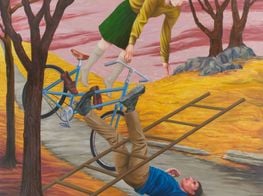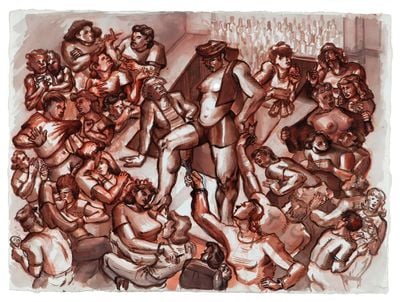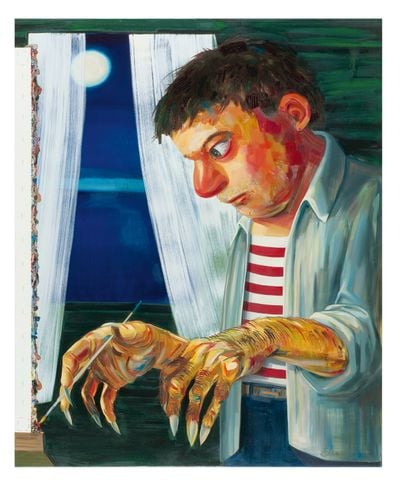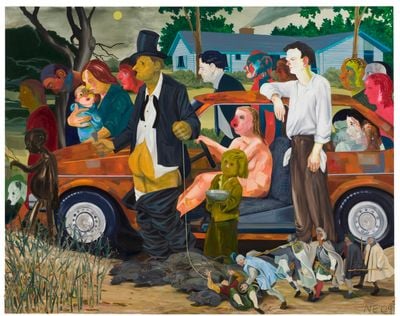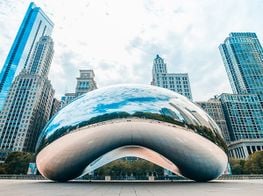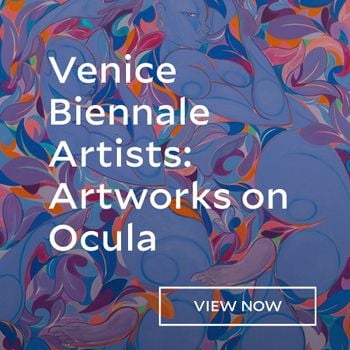Jadine Collingwood on 5 Paintings by Nicole Eisenman
The MCA Chicago curator dives into five paintings by Nicole Eisenman, revealing a sensitive and ultimately optimistic observer of people, politics, and place.

Jadine Collingwood. Courtesy Museum of Contemporary Art Chicago. Photo: Maria Ponce.
Nicole Eisenman: What Happened is the first major survey of the French-born American artist. It encompasses some 100 works—including paintings, drawings, murals, sculptures, and installations—from the early 1990s to today, with their subjects and style varying as dramatically as the social and political climates they mirrored.
Now on view at the Museum of Contemporary Art Chicago, where it has toured from London's Whitechapel Gallery, the exhibition situates Eisenman's works within the nation they were shaped by with characteristic humour and reflexivity.
Invited by Ocula Magazine, the MCA Chicago's associate curator Jadine Collingwood introduces Eisenman's practice through five select paintings, taking us from riotous downtown New York in the 1990s to the turmoil of post-2008 America.
1. Trash's Dance (1992)
Nicole began exhibiting in downtown New York in the early 1990s. Her drawings from this period reflect the riotous energy and politics of the moment—poking fun at the patriarchy and gender roles, lampooning U.S. consumerism, and transgressing social attitudes. They were quickly executed, humorous drawings influenced by comic books and cartoons.
Trash's Dance comes from this period. It's a crowded, boisterous bar scene, and shows a drag king named Trash who would dance on the bar. There are so many figures crammed into this space. There's a brawl breaking out; people are slumped over the bar; they're drinking, dancing, kissing. It's a careful, nuanced portrait of all of the chaos and fun and debauchery going on.
What I really love is the little figure hunched over with a sketchbook in the corner, who I see as being Nicole. It encapsulates so well her approach to representation—she's an observer of everyday life and that comes through a lot in the works that she makes.
2. Were-Artist (2007)
Were-Artist is in a section of the exhibition that addresses the ways Nicole was thinking about the psychology of being an artist, the process of working in the studio, and the rises and lulls in her own career.
I read Were-Artist as a self-portrait, but the artist becomes someone they don't recognise. It's paired with another portrait called From Success to Obscurity (2004), which shows a figure that's basically a rock, like the Thing character from the Marvel comics. But it's also thinking self-reflexively about her career, about transformation over time.
During this period Nicole starts to pay more attention to the texture and thickness of paint. In Were-Artist, the figure is painting on a canvas. One thing you can't see in reproductions is that the paint on this canvas is built up with impasto—it's very thickly applied. It becomes a tactile, sculptural material. The artist transforms into a werewolf whose body seems as monstrous as the surface they have created.
3. Coping (2008)
Nicole's paintings of crowds explore a familiar condition of contemporary life: the dual experience of connectedness and loneliness within a group. She captures melancholic figures who appear psychologically distant despite their physical proximity, but also the pleasures of being with community in public spaces such as street corners or beer gardens.
In the 2000s, you can see a shift from earlier introspective works like Trash's Dance and Were-Artist, to works that consider a wider social and political context. These issues start to appear in Nicole's work, but always with a careful consideration of the everyday.
In Coping, you see a lot of figures packed in together. They're trudging through something like mud; maybe it's shit. No one is really connecting with one another—there's a feeling of isolation within the group. Nicole painted this when she had just had a child, and there were a lot of larger political things happening. At the centre in the background is Nicole carrying her child. The figure to her right is her father, who is pointing the way—as though saying that despite it all, there's a way to get through.
4. Triumph of Poverty (2009)
Triumph of Poverty is concerned with a lot of the same issues as Coping. It's a part of Nicole's monumental political allegory paintings, which comment on the fraught atmosphere of political life in the U.S. These show people navigating the turmoil and uncertainty of the moment—characterised by the 'War on Terror', the Global Economic Crisis, the rise in far-right populism, and a growing consciousness of the climate emergency.
Nicole zooms out to think about these issues in a more allegorical and symbolic way. There are a lot of historical references in her paintings. In the corner of this one, there's a reference to a painting by Pieter Bruegel the Elder called The Blind Leading the Blind (1568). It depicts a society that is moving forward without really thinking about where it's going. In turn, Triumph of Poverty becomes an allegory for where society is headed.
5. Another Green World (2015)
Another Green World is a lively depiction of the best kind of party. We've all been to this party—where it's packed, and there are many little vignettes: everyone pairs off into groups, friends and lovers commune. It's part of a series of portraits of social life, showing moments of connection forged among communities to reveal intimate moments in times of crisis.
This is hung directly opposite The Abolitionists in the Park (2020–22), which is a representation of a Black Lives Matter protest with Nicole and her friends and colleagues gathered at the park. It depicts the togetherness and camaraderie that happens during those in-between moments of protest.
The title Another Green World is a reference to the 1975 Brian Eno record that you can see in the painting, but also to a literary concept called the 'Green World' defined by the critic Northrop Frye. This is a space within literature where characters might find themselves somewhere like the woods, and then something happens. It's a separate space where they commune and go through a transformation together. I think of this painting as being that alternative space—no matter what is happening outside of it, no matter how dark the political situation is, it remains a beautiful moment of affiliation between people. —[O]

